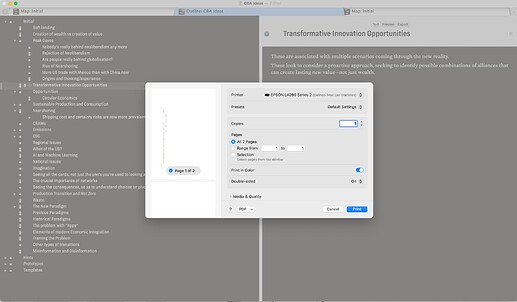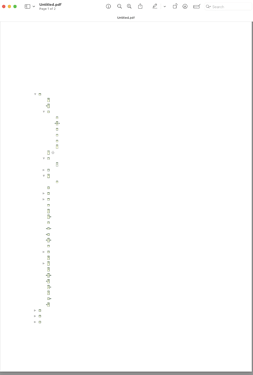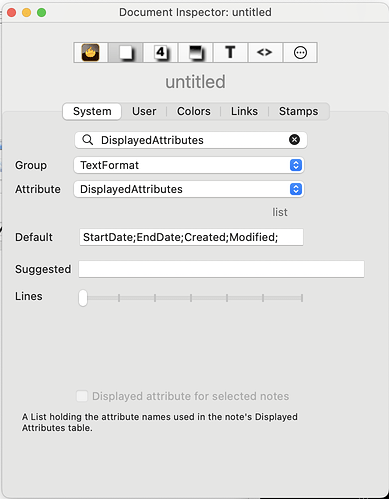Greetings!
I’m a science and technology (S&T) consultant and S&T historian. My typical projects involve collecting facts about a technology, how it works, how it is deployed, who’s developing/using it, its technical maturity, etc., and crafting a roadmap/schedule/cost estimate to mature the technology to a certain level.
On the software side, my workflows typically involve DEVONthink Pro and DEVONagent Pro for info mining along with some combination of Zotero, OmniOutliner, iThoughtsX, Scapple, Aeon Timeline, and Scrivener (the specific packages and their sequencing dependent on the project). I’ve tinkered a bit with Obsidian and TheBrain, but never really put much effort into learning or utilizing them for serious work. I very occasionally use BBedit for writing plaintext stuff. I recently acquired Hookmark but have spent no time with it as of yet. All of this in the way of background and context for my question.
I’m a Tinderbox neophyte. I purchased Tinderbox 3 years ago and have episodically investigated using it for various professional consulting projects since that time. Alas, every time I’ve attempted to employ it for a serious professional project with a serious deadline, I’ve ended up abandoning it because the learning curve is (for me) so steep and the incremental benefits so questionable, that I couldn’t justify the expenditure of time. I’ve always found a way to do the job I had to do, much more efficiently via other means.
Since purchasing Tinderbox I’ve periodically visited this and other Tinderbox forums to either seek solutions to my Tinderbox issues, or simply to observe how other folks are using Tinderbox. I’m always amazed at the brilliance of many of you who frequent these discussions. However, in all honesty, I also have the impression that some Tinderbox users really are more interested in and enamored by the “process” of using Tinderbox than they are in its use as an everyday production tool in a professional setting. This may very well be an incorrect impression, but it is my impression nevertheless.
I’m currently conducting research for a book I’m writing on the history of one small piece of the Manhattan Project. This book project is a very different animal than my other professional activities. I have a strong sense that there is a Tinderbox “pony in the pile” if I can just dig it out. My growing “knowledge garden” for this project is populated with facts about individual people and their interpersonal relationships; human organizations; places; S&T challenges, discoveries, and developments; WWII events; dates (lots of dates!); decisions; successes; failures; cause and effect relationships; timelines, etc.
SO… WITH ALL OF THAT AS BACKGROUND – MY QUESTION:
I would like to hear from Tinderbox users who have employed Tinderbox in a professional setting for projects similar to my new book project. In other words, can you simply share with me your “Use Case” for a specific project you’ve done where you had a story to discover and tell, and analysis to complete, but you did not have the leisure of wandering endlessly and aimlessly through your knowledge garden? I’m not looking for a detailed treatise or a “defense” of Tinderbox. Just some simple anecdotal instances of how Tinderbox has been used in professional and academic setting and why the user made the choice to use it.
Oh, one more thing, I’m acutely aware that “Tinderbox is not for everyone.”. But that statement is true about every software package.
I guess, at the end of the day, I’m looking for hope that the effort to learn and apply Tinderbox in my field and (especially) for this new book project will be justified by the benefits of doing so. Otherwise, I’m beginning to wonder if its time to remove Tinderbox from my “dock”.
Cheers and thanks so much for those of you who have the patience to engage with me on this subject.


